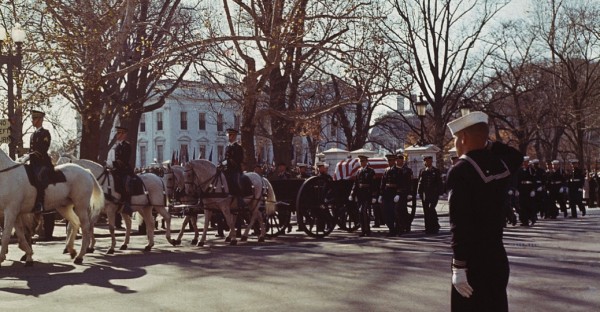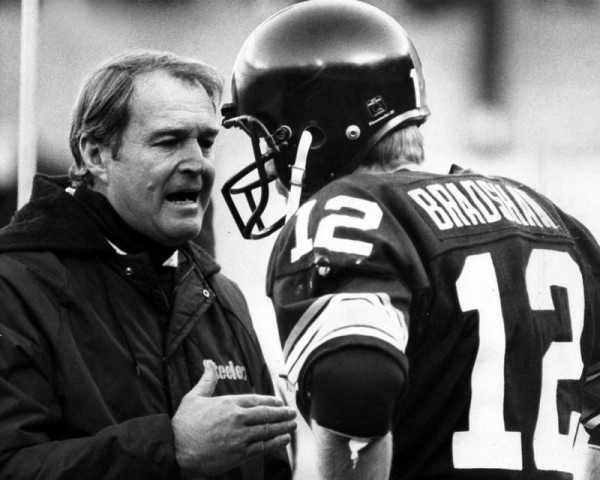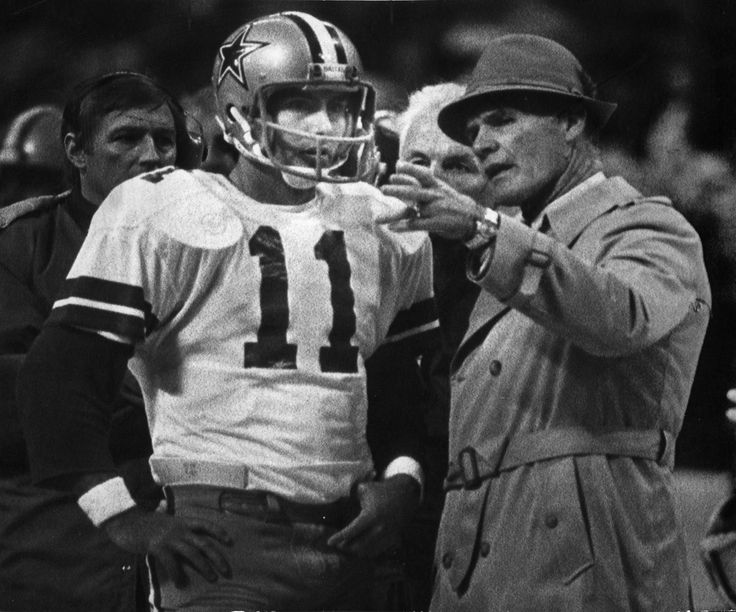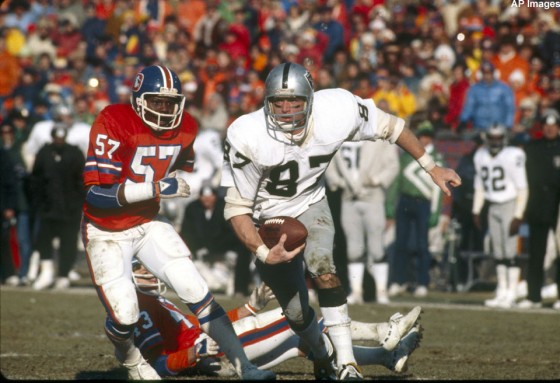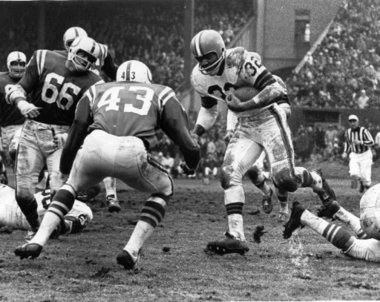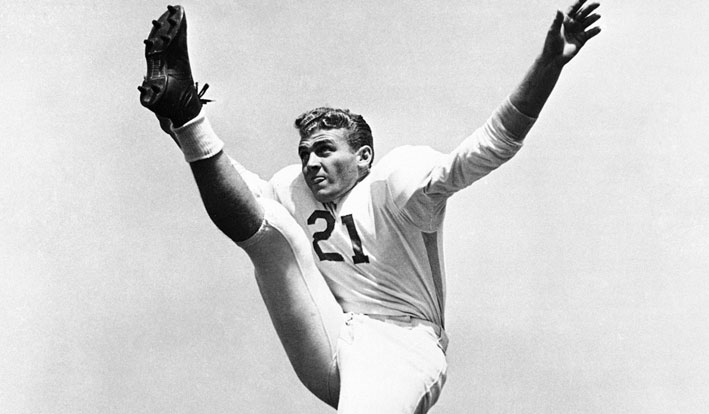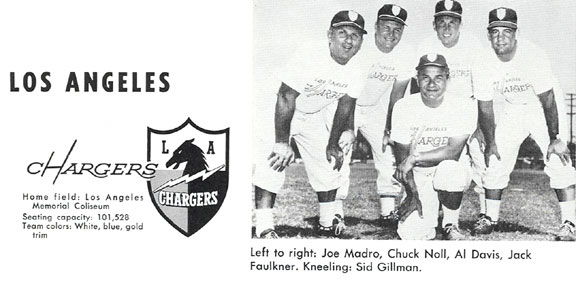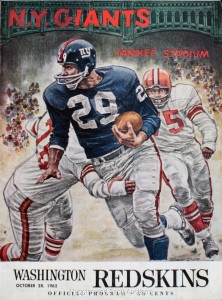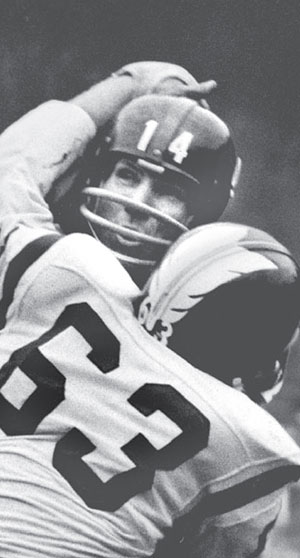The Detroit Lions face the Pittsburgh Steelers on this week’s NFL schedule, which takes this week’s Throwback Thursday feature back to an obscure game played between these two franchises on November 8, 1959. Both of the clubs were league bottom feeders that year, even though the Lions had been a dominant force in the decade, winning 3 NFL titles. The game was significant, however, in that it was the first time future Hall of Fame quarterback Bobby Layne, who had led the Lions throughout the decade, was to play against the team that traded him prior to the ’59 season. Layne’s old coach in Detroit, Buddy Parker, was now coaching the Steelers and made the trade to try to lift the lowly Pittsburgh club out of their losing doldrums. At the time of the trade, Layne was so upset that he proclaimed that the Lions “wouldn’t win again for the next 50 years!” And of course, Detroit to this day hasn’t won a title and has made only rare playoff appearances. They, along with the Cleveland Browns, are the only non-expansion teams to have never reached a Super bowl in the game’s 51 year existence. Layne’s proclamation has grown into what is now considered a hex on the franchise known as “The curse of Bobby Layne”. While baseball’s Boston Red Sox finally overcame their “curse of Babe Ruth” after trading the legendary slugger, the Lions’ “curse” has now surpassed the 50 years Layne put on them.
As for the actual game, it was pretty non-descript. Only about 24,000 fans were in attendance at old Forbes Field in Pittsburgh to witness the two losing clubs battle to a 10-10 tie. Layne didn’t get revenge on his old club, but he could take solace in the fact that he provided his Steelers with all of their points, tossing a 20 yard scoring pass to Tom Tracy, kicking the extra point and adding a 29 yard field goal. The season rebounded for the Steelers after this game. They won 4 of their last 5 to finish with a 6-5-1 record, the only winning season they would enjoy with Layne calling the signals.
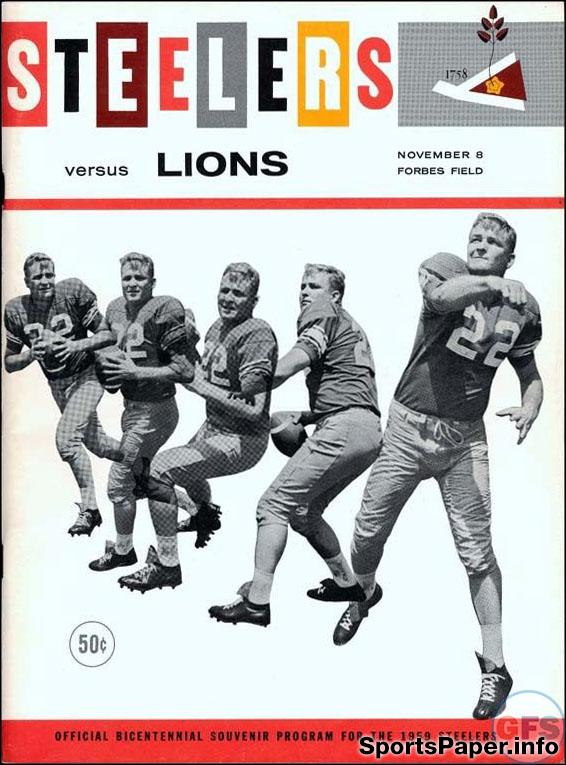
Bobby Layne was prominently featured on the 1959 Steelers/Lions game program
